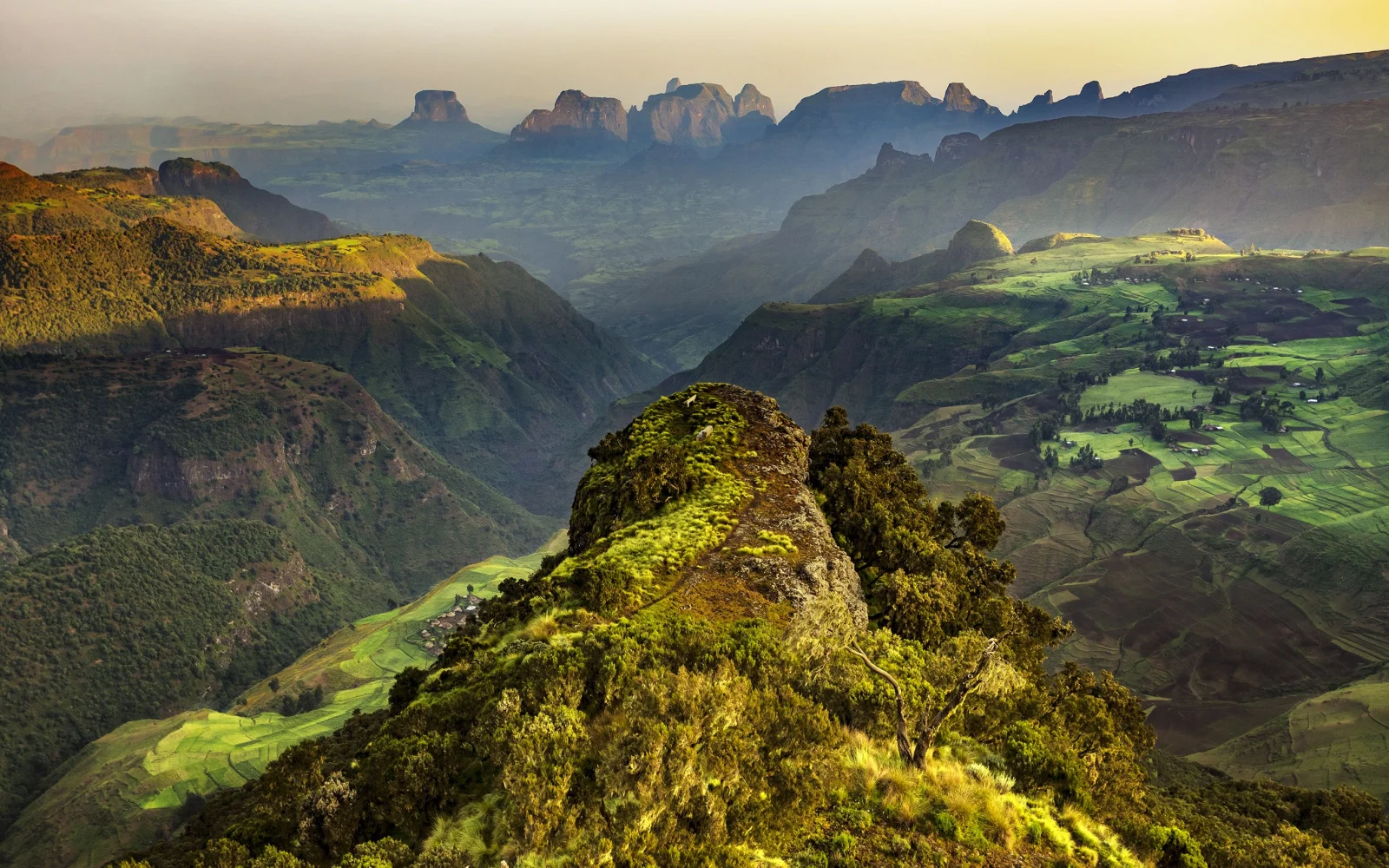What's the best time to visit Ethiopia?
Visiting Ethiopia from October to February offers warm, dry weather and cool nights, ideal for exploring the country’s diverse regions and enjoying its vibrant festival season, including religious festivals like Ethiopian Christmas and Timkat. This period is perfect for sightseeing, with minimal rainfall and temperatures ranging from 71F to 75F, especially suitable for visiting the Ethiopian Highlands and the Simien Mountains.
While room rates are higher during the peak season of December to February, the overall experience and lower prices in October and November make this time the most favorable for a visit.
Ethiopia, the “Land of Origins,” is a country of endless wonder, with a rich history, culture, and natural beauty. From the ancient rock-hewn churches of Lalibela to the soaring peaks of the Simien Mountains to the vast savannas of the Omo Valley, there is something for everyone.
But while it’s rich in history and culture, what is the best time to visit Ethiopia? We’ll give you our expert advice in our guide below.
The Overall Best Time to Visit Ethiopia
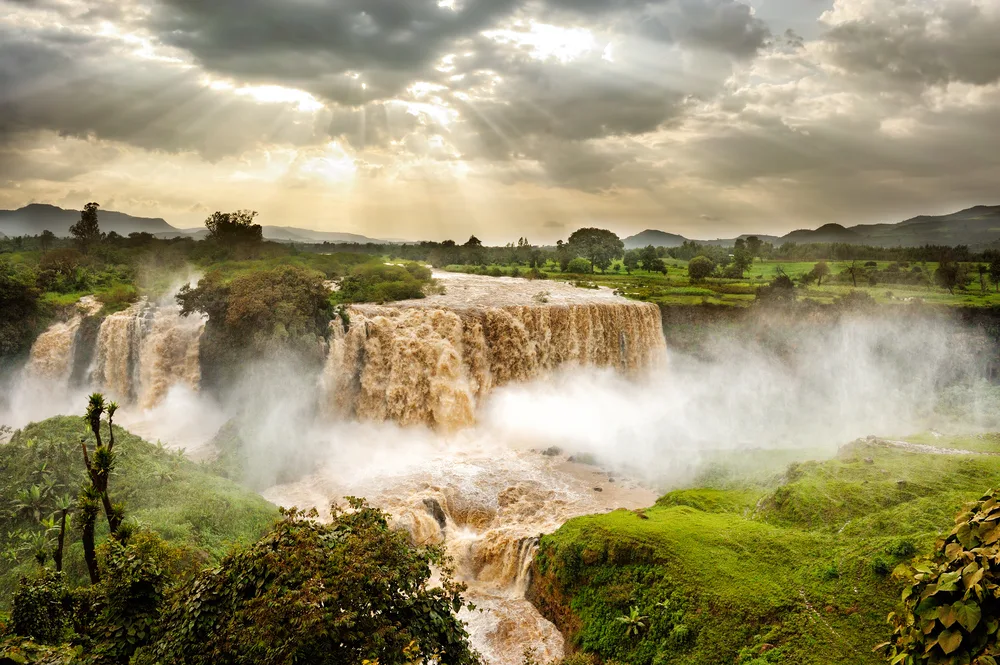
Fotystory.pl/Shutterstock
The best time to visit Ethiopia is from October to February. During this time, the weather is dry and warm with cool nights, festival season is in full swing, and conditions are perfect for sightseeing.
From October to February, you can expect highs from 71F to 75F with minimal rainfall (especially in November and December, the driest months of the year). It’s an excellent time to get out and explore different regions of the country.
You’ll get to skip the hottest and rainiest months for all regions by going to Ethiopia during this time of year. Conditions are ideal or close to it no matter which part you travel to.
Festival season in Ethiopia is in full swing, extending from the end of September through January. Religious festivals like Ethiopian Christmas (January 7), Fasika (Easter), and Timkat (January 19) happen during this time.
This period is the best time to visit the rock-hewn churches in the Ethiopian Highlands in the northern part of the country and to see the Blue Nile Falls.
October is also perfect for a visit to the Simien Mountains of Ethiopia, where you’ll see swathes of colorful wildflowers in bloom amid the rugged peaks. The only real downside to consider when visiting during this season is the higher prices you’ll see from December to February, Ethiopia’s peak season.
Expect room rates closer to $130/night during the December-February period, which is still reasonable but much more expensive than other months of the year in Ethiopia.
Prices per night are around $55-$59/night in October and November, making it the best time to come if you’re hoping to spend a little less.
Cheapest Time to Visit Ethiopia
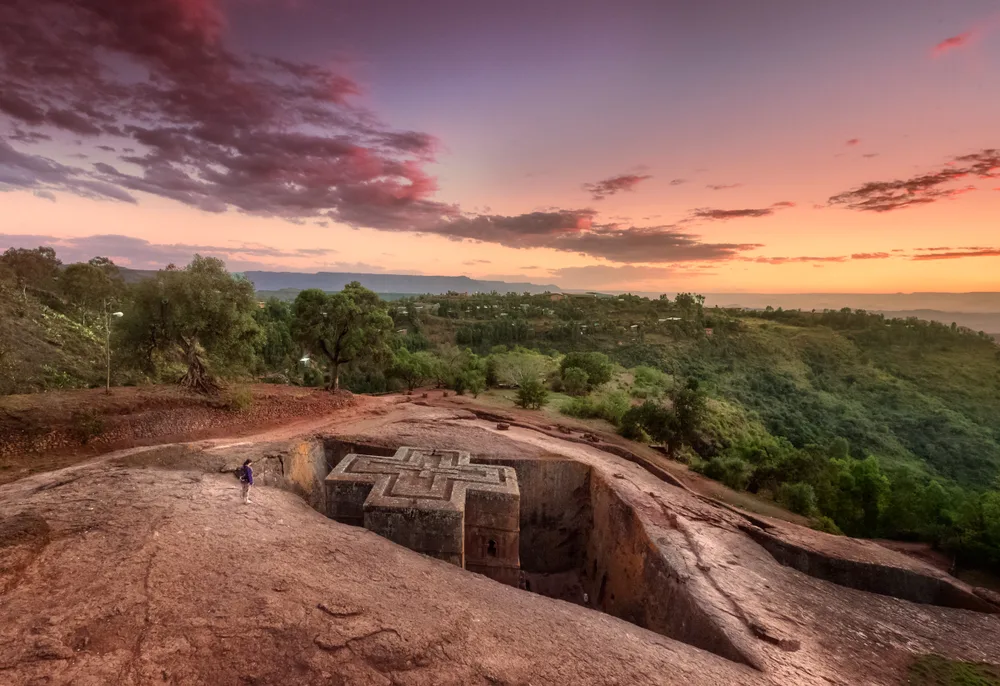
Michail_Vorobyev/Shutterstock
The cheapest time to visit Ethiopia is from June to September. During the main rainy season in the country, when prices drop as much as 60% from the peak season.
During June, the month the Kiremt rainy season starts, you’ll find the lowest prices on accommodations in Ethiopia of the entire year. You can expect to pay around $52/night for a hotel here in June, with rates rising to $83/night in July and dipping down to the lowest price – $50/night – in August.
September features accommodations prices around $59/night, which is still around 54% cheaper than hotel rooms during the peak December-February season.
While rain and heat dominates the forecast during this period, it’s not constant and there are still periods of warm sunshine with nice breezes that make it comfortable.
The annual Meskel (meaning “cross”) festival takes place in late September, so if you want to experience part of Ethiopian culture and history, it’s a great time to be here.
Least Busy Time to Visit Ethiopia
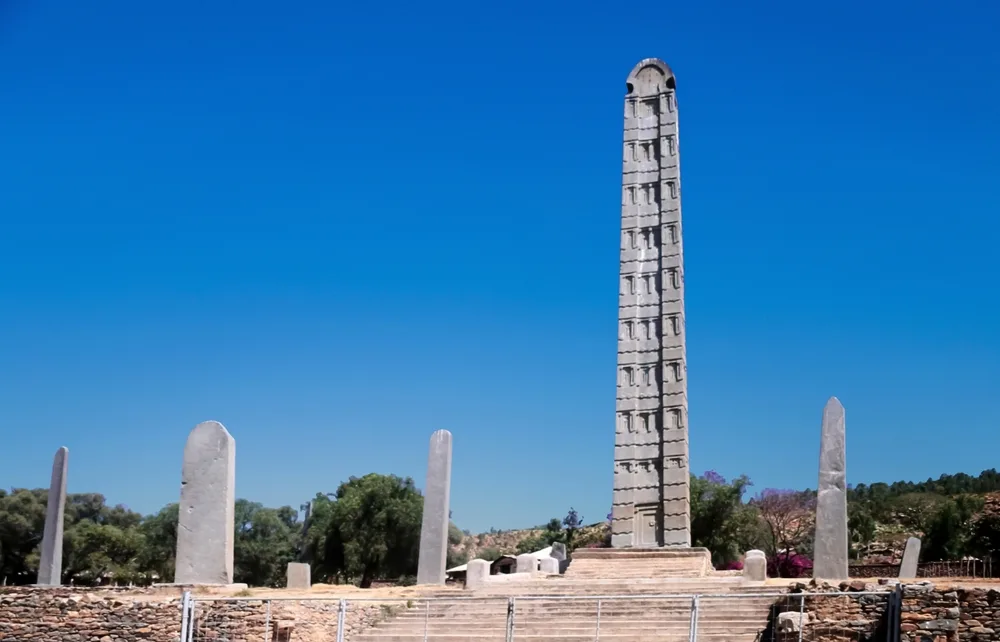
travelview/Shutterstock
The least busy time to visit Ethiopia is from April to September, owing to the main and secondary rainy seasons taking place and few festivals and events happening.
From April to September, you can experience the wonder of Ethiopia without big crowds of tourists or the reduced hotel availability and higher prices that go along with them.
This slower season is ideal for a less-crowded visit, but it’s not perfect for everyone. That’s because Ethiopia’s two rainy seasons – the secondary Belg from February to May and the main Kiremt from June to September – happen at this time of year.
Expect around 3.2″ of rain per month in April and May, with the real downpours occurring from June to September.
June gets around 5.4″, but by the time August rolls around, the country is getting over 11″ of rain in a 30-day period. You can imagine how this amount of rain can disrupt travel and sightseeing plans!
Still, if you’re planning on doing some indoor activities or spending time in the drier areas – the arid Dire Dawa region in the east – can be a great way to spend this time of year and benefit with fewer crowds.
Worst Time to Visit Ethiopia
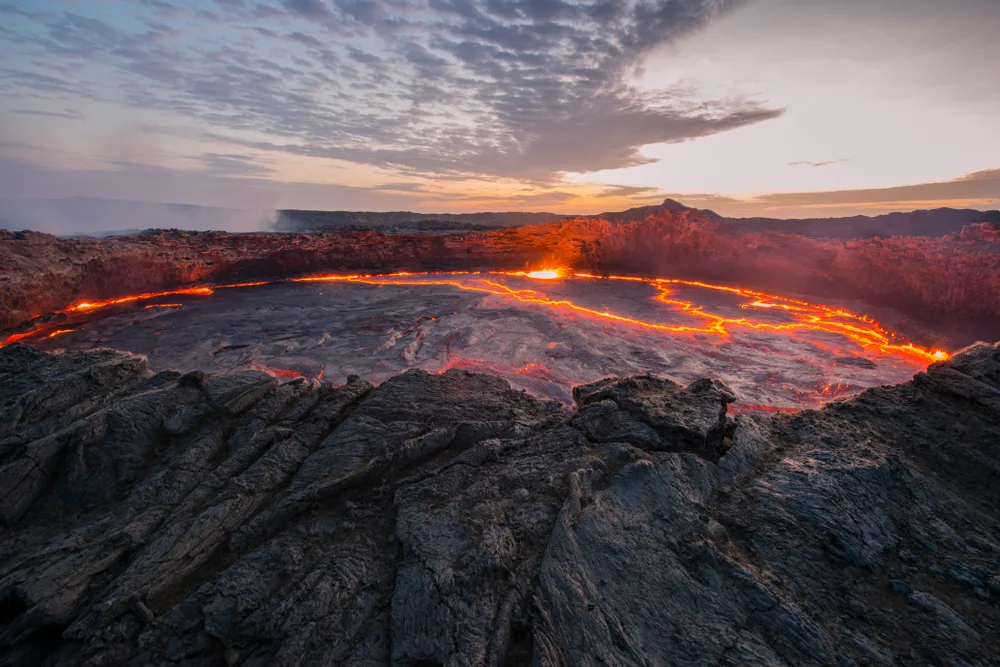
Mikhail Cheremkin/Shutterstock
The worst time to visit Ethiopia are months of July and August, the wettest months of the year here (especially in the Northern Highlands). This is when you’ll experience the brunt of the main rainy season, Kiremt, in Ethiopia.
July gets about 11 inches of rain, while August gets almost 11.5″ throughout the month! This rainy season makes it hard to enjoy an Ethiopian visit if you’re interested in getting out and exploring the national parks, seeing historical sites, or enjoying hikes or strolls through the cities.
While this is the worst time of year to visit Ethiopia, it’s a vital period for the ecological health of the area. This period is when the Blue Nile river tributary swells and contributes about 85% of the Nile River’s flow.
During July and August, prices on hotels in Ethiopia are on the cheaper side and range from the annual low ($50/night) in August to around $83/night in July. If you have to go during this period, head to the eastern region of the country in Dire Dawa, where a much more bearable 3.3″ to 4.9″ of rain falls in July and August.
Things to Consider
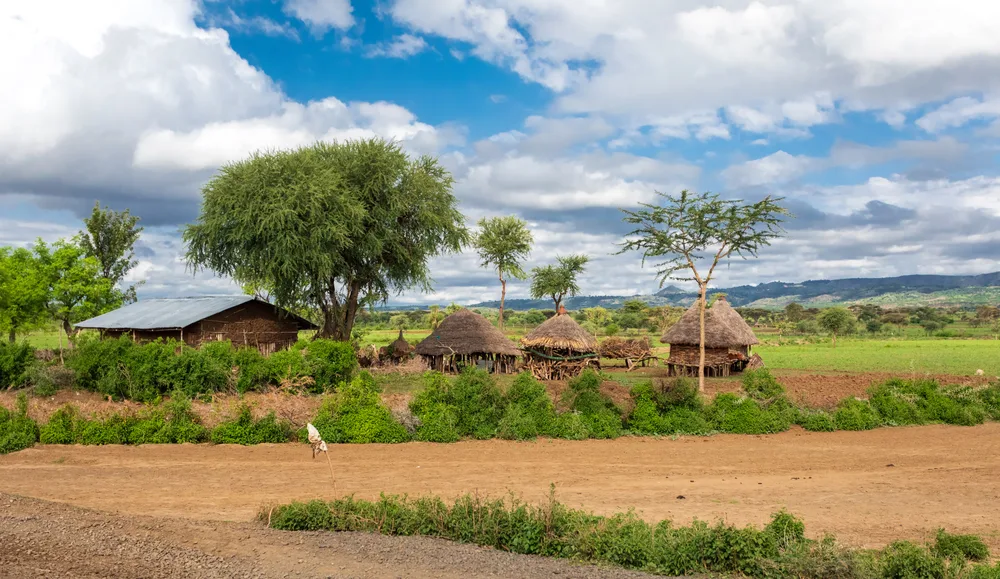
Artush/Shutterstock
What else should you know before you go? Here are a few additional considerations and travel tips to keep in mind while you start planning a trip to Ethiopia.
- Make sure it’s safe to visit. There is a current Level 3 travel advisory issued by the U.S. Department of State’s Bureau of Consular Affairs warning U.S. citizens not to go to certain areas. Addis Ababa is still considered stable and safe for tourists, but other areas may put you at risk for civil unrest, crime, communications disruptions, and kidnapping near the borders.
- Head to the Simien Mountains. When in Ethiopia, you’ve got to see the Simien Mountains! The highest peak in the range stands 14,872 feet tall – it’s one of the highest mountains on the entire African continent. October is especially perfect for a visit to the mountains, but the surrounding months of September and November are also ideal.
- English is widely spoken here. One great thing about visiting Ethiopia is that the locals often speak English. That makes communication much easier and will help you get around without issue. Tourist areas may be the most likely to have English-speaking staff and locals you can communicate with.
- A range of currency is accepted. In Ethiopia, you can generally use U.S. dollars, British pounds, and euros without issue in the tourist-centric areas and larger cities. This means you won’t have to convert currency upon arrival, which is really convenient for travelers and may make purchases a little easier. You can exchange currency at Ethiopian banks or at the airport if you choose to use the local Ethiopian Birr.
Frequently Asked Questions
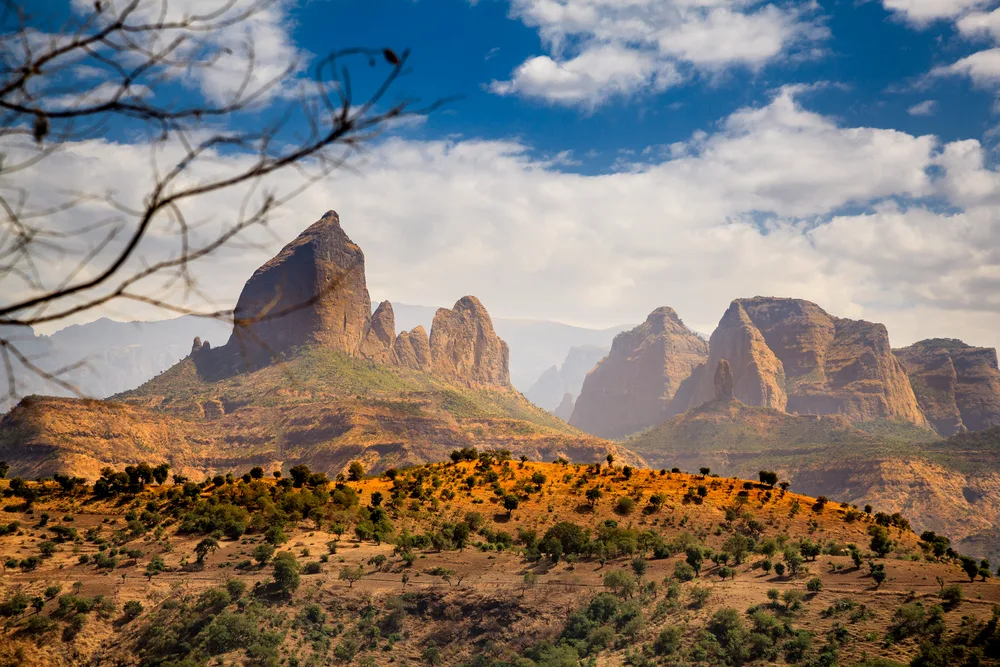
Radek Borovka/Shutterstock
Check out the most frequently asked questions to learn more about the best time to visit Ethiopia and other requirements and considerations to keep in mind before you go.
What is the rainy season in Ethiopia?
June to September is the main rainy season, called Kiremt in Ethiopia. Huge downpours dumping up to 11.5” of rain happen during the peak of the rainy season. A smaller rainy season, Belg, occurs from February to May with much less rainfall ranging from 1.18" to 3.3".
What are the hottest months in Ethiopia?
The hottest months in Ethiopia occur from March to May, which see average daily highs around 77F. This period is the bulk of the moderate Belg rainy season. Ethiopia lies in the tropical latitudes, but the mountainous areas and highlands stay a little cooler than the lower elevations.
So, When Should You Visit Ethiopia?
Overall, the best time to visit Ethiopia is from October to February. Dry, warm weather is the norm (though nights are cooler), you can attend religious and cultural festivals, and sightseeing is at its best.
Try to avoid visiting Ethiopia from July to August, the wettest months of the year when a combined 22+ inches of rain fall on the country. Visiting the Cradle of Humanity is an awe-inspiring trip that is sure to leave you with rich experiences and a new appreciation for the history of this storied country.
Whether you plan to head to Ethiopia during the best, cheapest, or least busy time of year, make sure to give yourself enough time to experience this country in full. You might find that a single trip isn’t enough to pack it all in and will want to head back soon!



